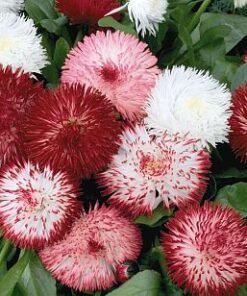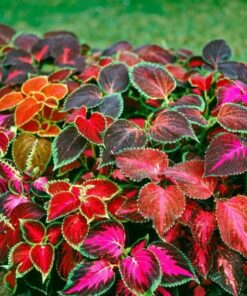Clarkia Seeds Mix Color 40-50 seeds Open Pollinated
₹40.00
In stock
Clarkia is a beautiful flowering plant which can be simply grown from seeds. Clarkia belongs to the family of evening primrose and has delicate, multicolored flowers. it is grown in cool and temperate weather conditions and thus turns out to be an ideal choice for vast areas of India, especially during the months of October to January.
When to Plant Clarkia Seeds in India?
Clarkia grows in winter season in India it is advisable to sow its seeds between September and November in India. This will allow the plant to grow well before the hot summer season. In regions where winters are extremely cold, you can also sow the seeds early in spring.
How to Grow Clarkia from Seeds?
Basically Choose the Right Location: Clarkia needs a bright location with well-draining soil. Clarkia also accepts partial shade.
Soil Preparation: The soil should be loose and rich in organic matter. Add compost or rotted manure and blend it for a better quality.
Clarkia Seeds Sowing the Seeds: Sow the seeds directly on the ground surface and press them lightly. Do not cover them deeply.
Water Gently: Keep media moist. Daily light watering will result in the germination of seeds.
Germination: Seeds will sprout in about 10-15 days. Thin seedlings when they are a few inches tall, allowing sufficient space for each plant.
Care for Clarkia Seeds
Watering: Firstly Water the plants regularly without overwatering. Maintain the soil lightly moist.
Sunlight: Clarkia needs a minimum of 4-6 hours of sunlight a day.
Clarkia Seeds Fertilizer: Weak liquid fertilizer every 2-3 weeks will maintain the plants well-growing and flowering beautifully.
Support: Stake tall varieties to prevent them from bending.
Clarkia Seeds Blooming and Harvesting Seeds
Clarkia flowers start flowering in about 8-10 weeks after they were planted. The flowers are available in pink, purple, red, and white colors. The flowers dry up and become seed pods. Store seeds for next season in refrigerator later.
Conclusion
Lastly It is easy and uncomplicated to cultivate Clarkia in India. With proper care, you can have its gorgeous flowers throughout winter and early spring. In garden beds or pots, Clarkia adds the space a beautiful charm!
| Weight | 10 g |
|---|---|
| Color | Mix |
| Germination Level | Easy |
| Growth Pattern | Up right Straight |
| Hybrid or Open Pollinated | Open Pollinated |
| Ideal location | Full sun |
| Origin Country | India |
Be the first to review “Clarkia Seeds Mix Color 40-50 seeds Open Pollinated” Cancel reply
You must be logged in to post a review.
Related products
Summer Flower seeds
Winter Flower Seeds
Phlox Twinkle Star Seeds flower Hybrid seeds pack of 40-50 seeds Open Pollinated












Reviews
There are no reviews yet.